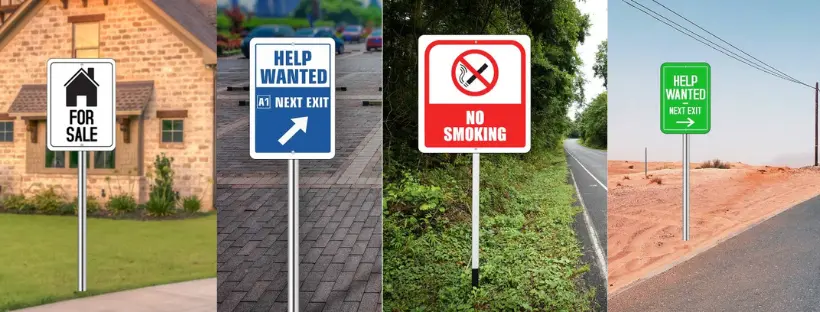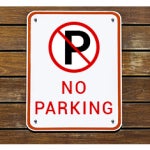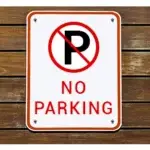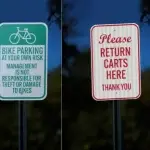Custom street signs are a charming way to personalize and enhance the character of your neighborhood or community. However, it’s crucial to ensure compliance with local regulations when embarking on such projects to avoid potential legal complications, fines, or even having to remove the signs. In this comprehensive guide, we will take you through the essential steps to ensure compliance with local regulations when installing custom street signs. By following these guidelines, you can beautify your community while respecting the law.

Research Local Regulations
Before you begin the process of ordering or installing custom street signs, it’s essential to conduct thorough research on your local regulations. Local ordinances and zoning codes can significantly differ from one jurisdiction to another, affecting sign size, placement, materials, and design guidelines.
Start by visiting your city or municipality’s official website and searching for information related to personalized metal street signs and signage regulations. These resources often provide downloadable documents or guidelines that specify the requirements and restrictions regarding street signs. Additionally, you can visit or call your local planning or zoning department to inquire about specific regulations that apply to your area.
Contact Local Authorities
If you have any uncertainties or need clarification on the local regulations pertaining to custom street signs, it’s advisable to reach out to your local authorities. Most cities and municipalities have departments responsible for handling zoning and permitting questions. These experts are there to assist and guide you through the process, ensuring that your custom street sign project adheres to all necessary rules and regulations.
When contacting local authorities, be prepared to ask specific questions related to your project, such as:
- Are there any restrictions on sign size, color, or design?
- What are the requirements for obtaining a sign permit?
- Where can funny custom street signs be placed within the community?
- Are there any specific materials that must be used for durability and visibility?
- Are there regulations concerning reflectivity and nighttime visibility?
Engaging with local authorities early in the process can save you time and potential setbacks down the line.
Signage Installation Design Considerations
While creating your custom road sign design, it’s vital to keep local regulations in mind. Your goal should be to craft a unique and appealing sign that also complies with the law. Pay close attention to the following design elements:
- Size: Ensure that your sign’s dimensions align with the maximum and minimum size requirements specified in the local regulations.
- Color: Some jurisdictions may have restrictions on sign colors, often to maintain a uniform aesthetic within the community. Check local guidelines to see if there are any color limitations.
- Font: Select a legible font that adheres to local regulations, especially if there are specific requirements regarding typography.
- Visibility: Your custom street sign should be easily visible during the day and at night. Consider factors like reflectivity, illumination, and contrasting colors to enhance visibility.
By incorporating these design considerations into your custom street sign, you can create a visually appealing sign that complies with local regulations.
Permitting Process
In many locations, installing a reflective sesame street sign will require obtaining a permit. The permitting process can vary in complexity, depending on your jurisdiction and the scope of your project. To ensure compliance, contact your local permitting office early in the planning stage to determine the type of permit required and the documentation needed to apply for it.
The process typically involves the following steps:
- Application: Submit a permit application to your local permitting office. Ensure that the application includes all necessary details, such as sign dimensions, design specifications, and the intended location.
- Review: Your application will be reviewed by the appropriate department or agency. During this stage, they will assess your proposal for compliance with local regulations.
- Approval: Once your application is approved, you will receive the necessary permits to proceed with your custom street sign installation.
- Fees: Be prepared to pay any associated fees, which can vary depending on your location and the complexity of the project.
Obtaining the required permit is a critical step in ensuring compliance with local regulations. Failure to do so can lead to legal consequences and the removal of the sign.
Location and Placement
Local regulations often dictate where you can place street signs, and they may have specific rules regarding:
- Height: Regulations may stipulate the maximum and minimum heights for street signs to ensure they are visible to pedestrians and motorists.
- Distance from the Road: The distance between the sign and the road or sidewalk is usually regulated to prevent obstruction and maintain safety.
- Proximity to Other Structures: There may be restrictions on how close your custom street sign can be to other structures, such as buildings, utility poles, or traffic signals.
It’s crucial to thoroughly understand these placement rules and ensure that your sign installation location adheres to them. Violating placement regulations can result in fines or the need to relocate the sign.
Sign Materials
Custom signs like one way street signs can be fabricated from a variety of materials, including wood, metal, plastic, and composite materials. Local regulations may specify which materials are acceptable to ensure durability and visibility. Common materials used for street signs include aluminum, which is known for its durability and resistance to corrosion, and high-density polyethylene (HDPE), which is lightweight and resistant to fading.
Before selecting materials for your reflective funny street sign, consult your local regulations to determine if there are any specific requirements or restrictions in place. Adhering to these regulations will help ensure that your sign remains in good condition over time.
Installation Guidelines
Proper installation is essential to ensure that your custom street sign complies with local regulations and remains securely in place. Whether you plan to install the sign yourself or hire a professional installer, it’s vital to adhere to installation guidelines provided by your local authorities. These guidelines may cover various aspects of installation, such as:
- Hardware: Use the specified hardware or mounting brackets recommended by local regulations to secure the sign to its post or support structure.
- Post Depth: Regulations may dictate the minimum depth for the post or support structure to ensure stability and prevent the sign from leaning or falling.
- Angle: Pay attention to the recommended angle at which the sign should be installed for optimal visibility to both pedestrians and drivers.
Custom street signs can be a wonderful addition to your community, but they must be installed with care and compliance with local regulations. By thoroughly researching and adhering to the guidelines provided by your local authorities, you can enjoy the benefits of your personalized street sign without worrying about potential legal complications. Remember that local regulations can change, so it’s essential to stay informed and stay in touch with your local authorities throughout the process.








































 Posted in
Posted in 





